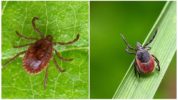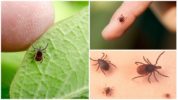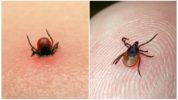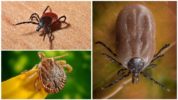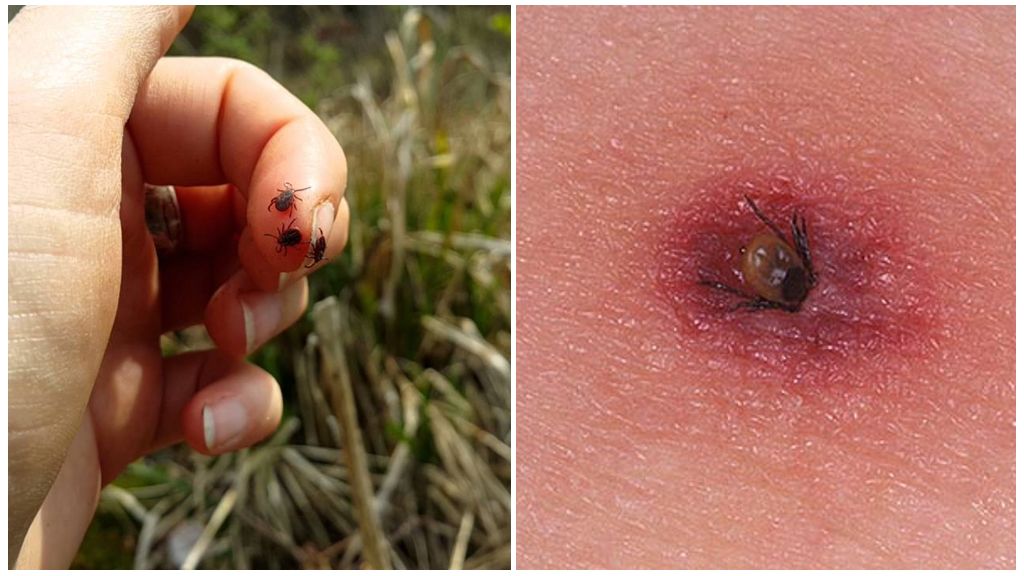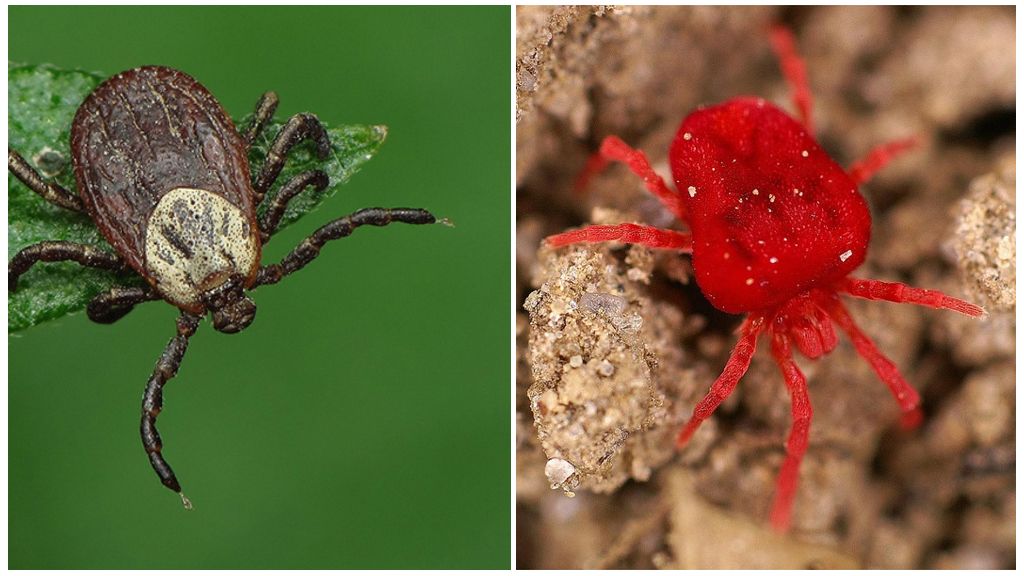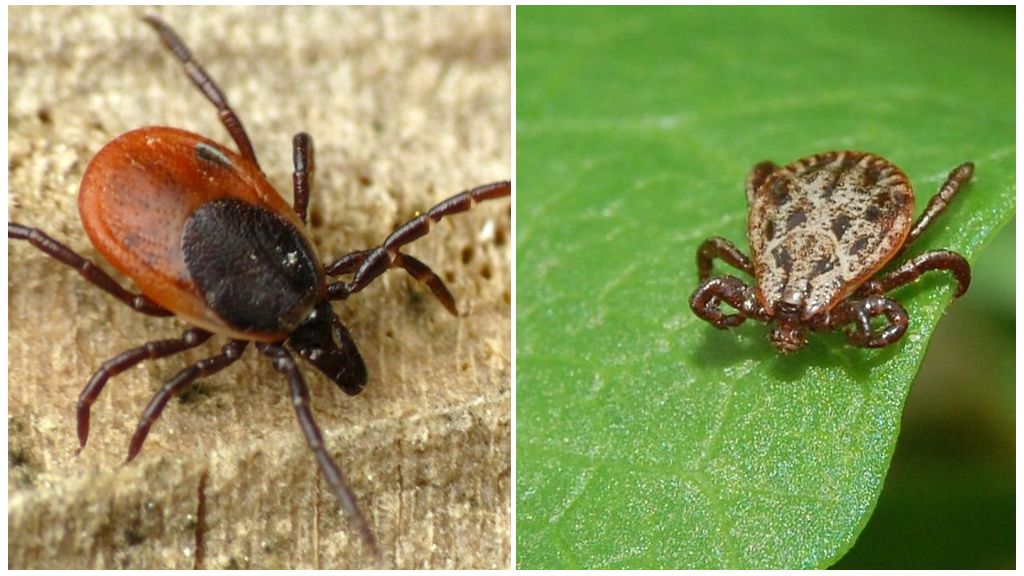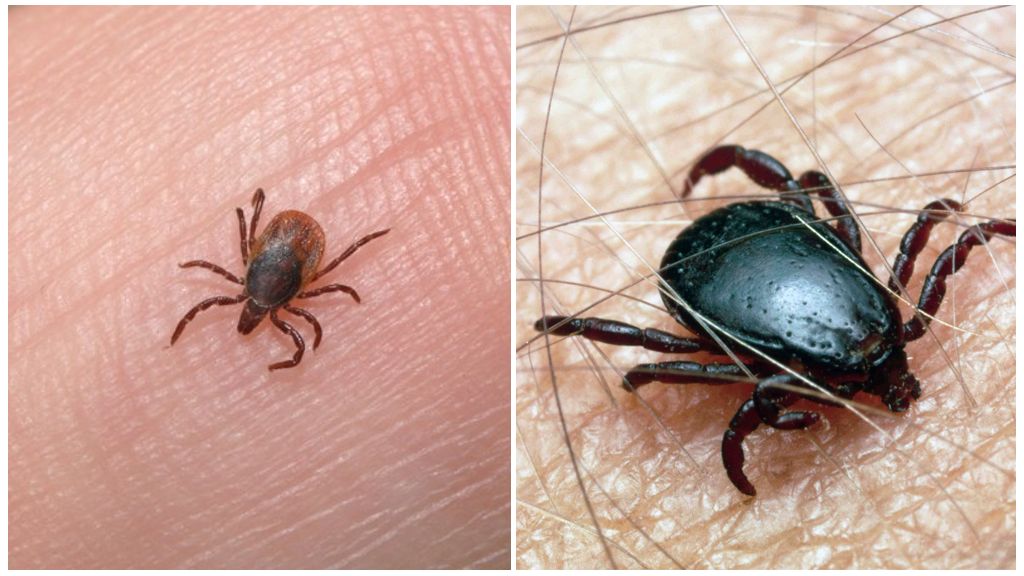- Tick propagation
- Ticks
- The appearance of the tick
- Tick bite
- Ticks
One of the most numerous and ancient groups of arthropods that arose during the time of dinosaurs and survived to this day - ticks, has more than 50 thousand species. Even acarologists, scientists involved in the study of this subclass, do not know everything about ticks. Many species have been found and described, but due to the inaccessibility of the arachnid habitats, little is known about their lifestyle and relevance to ecosystems. The species that live next to humans and are often parasitic on him have been studied in more detail.
Who or what is a tick
Small, six-legged and creeping. Who is it? Certainly some kind of insect. In fact, when answering the question, a tick is an insect or an animal, you need to choose the second option. These peculiar creatures belong to the animal world and are arachnids. Unlike spiders poisonous ticks do not exist. That is, they do not use the secret of their salivary glands to kill the victim.
The Latin name for ticks is Acari. The name refers to the entire subclass. And the section of zoology studying these arthropods is called “acarology”.
Interesting!
Ticks are not insects, but traditionally many acarologists are members of the Russian Entomological Society.
People often classify any small many-legged life forms as insects, so this confusion will continue in the future. With insects, the Akari subclass is related in their developmental stages, which are usually absent in more developed life forms. There are four such stages in arthropods:
- egg;
- larva;
- nymph;
- adult individual.
Depending on the type of tick, the nymph also has from 1 to 3 stages of development.
Egg
Mite eggs under a microscope resemble fish eggs. This is a large cell, covered with a soft membrane and containing the yolk, cytoplasm and nucleus. The outer shell may be smooth or ribbed. The eggs have different colors and two shells: the outer is dense, and the inner yolk is thin. The shape of an egg can be:
- round;
- flattened;
- elongated;
- oval.
Each tick species has its own specific egg shape.
The egg size relative to the body length of a mature female is very large. Usually the egg is larger than the last segment of the abdomen. After the eggs mature, the female lays them in a secluded moist place.
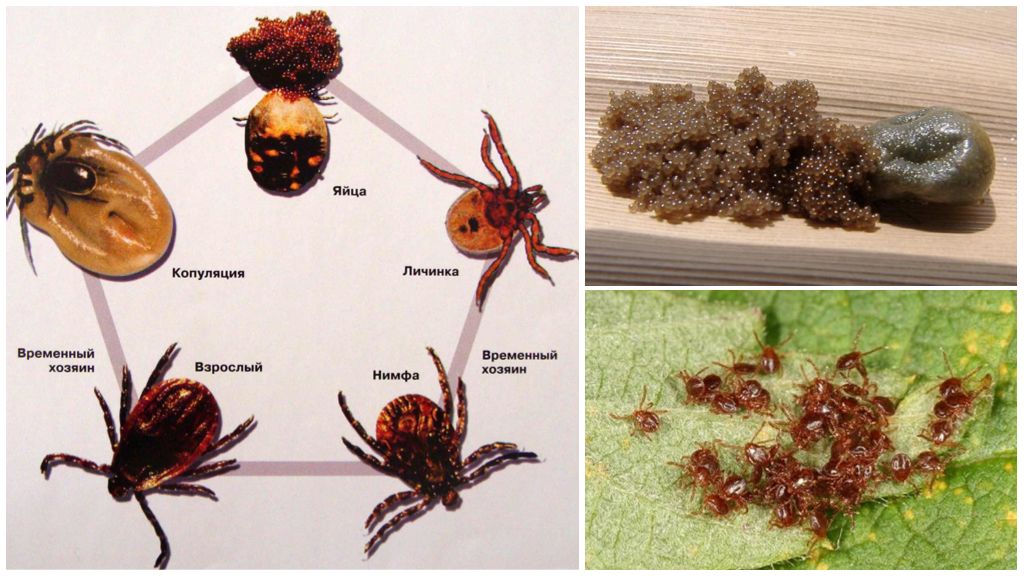
Because of this, some species of ticks have developed a very original way of live birth: posthumous. With this method, after the eggs mature by the fall, the female does not lay, but dies. The eggs remain for the winter in the body of the female. In spring, the larvae hatch and gnaw out at will. One of the reasons ticks die from is the continuation of the genus. The peculiarity of this method breeding according to experts, it arose because the eggs are too large to be laid without the death of the female.
Interesting!
In two species: bread and pot-bellied ticks, live births are true.
Prelarval stage
Before hatching, ticks have an immobile stage. At this time, the larva almost ready for exit freezes motionless, spending the last reserves of protein. In most species, this stage lasts a very short time and is difficult to notice.
Larva
After leaving the egg, the larva is already similar to an adult, but it has significantly smaller sizes and there are some differences in its structure:
- 3 pairs of legs;
- there are no rudiments of genitalia;
- no bristles;
- no last three abdominal segments.
On a note!
In some forms, the larvae are transparent and it is almost impossible to see it with the naked eye, since its size does not exceed 0.5 mm.
Nymph
Not all types of ticks in their development go through all three stages. Three ages are present in ixodic and argas ticks. Sarcoptoid and teranichoids cost 1st and 3rd ages. Thrombiform ticks pass the first two ages. Each age has its own name:
- protonymph;
- deutonymph;
- tritonymph.
The protonymph has 4 pairs of legs, on which there are still very few setae. Also at this stage, a genital opening and 2 genital setae appear with a pair of genital tentacles.
In deutonymph, the number of setae on the legs increases. 6 genital setae and 4 genital tentacles appear.
Tritonimph continues to grow with genital tentacles (already 3 pairs) and setae. The number of tactile bristles on the legs and body surface increases. If you look at the images of all three forms, you can see that the anatomy of a third-generation nymph is almost no different from the morphology of ticks.
Sexually mature individual
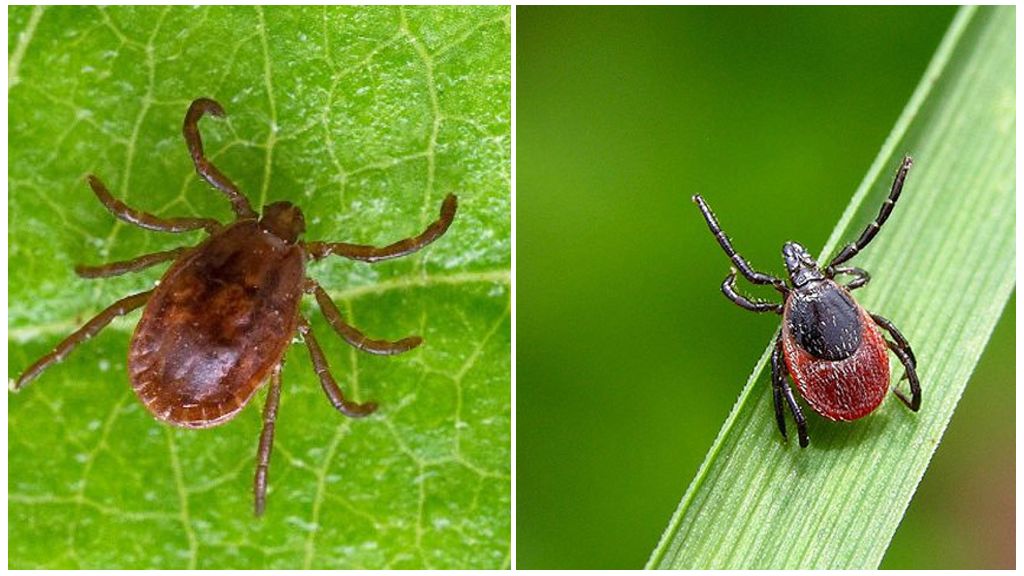
The structure of the tick is usually considered on the example of ixodid ticks as the most common in the world. The same group is the most dangerous.
External structure
A tick usually has an elongated body, where the chest and abdomen are fused together. Hungry individuals are flat above and below. Full females resemble a leathery pouch. The “skin” of the tick is actually a chitinous cuticle. On the back of arthropods, the densified cuticle forms a protective shield. In females this shield is located only on the front of the body, in males it covers the entire dorsal part. Under the cuticle are the internal organs and muscles of the bloodsuckers.
Interesting!
Some species of ixodidae have shields and on the lower side of the body.
In the photo of the tick under the microscope, you can see the side appendages of the arachnid. In many species, the length of the appendages is so different that it is often impossible to understand how many paws there are on the tick. But all species of these animals have only 4 pairs of legs. What may appear to be the front paws is actually the chelicera and pedipalps of the tick, which are part of the structure of the oral apparatus.
On a note!
Tick chelicerae and palps also belong to limbs. These limbs could once be a pair of legs, but today are included in the mechanism of the oral apparatus.
Head
The head is so small that the proboscis seems to be attached directly to the body. The piercing-sucking mouth organs of the tick have changed significantly compared to a gnawing apparatus. The proboscis of the tick has a hexagonal or rectangular base. The structure of the proboscis is quite complex:
- chelicera;
- pedipalps;
- hypostome.
The latter in the ixods is equipped with teeth that help to stay on the victim. Chelicera in some species of arthropods have become like scissors. The suckers fused into a hollow steel tube. Stilofor - protection for stylet formed by modified chelice fingers. In bloodsuckers, these “fingers” were transformed into a tube through which blood enters the digestive tract.
On a note!
Pedipalps (palps) have only an auxiliary value and are often reduced.
Legs
The adult individual has 4 pairs, the larva has three. Tick legs are homologous to the extremities of insects:
- pelvis;
- swivel;
- hip;
- knee;
- shin;
- foot.
Since the tick clings to the victim first with the front pair of legs, the legs of the predatory and parasitic species are equipped with hooks and suction cups to help stay on the animal.
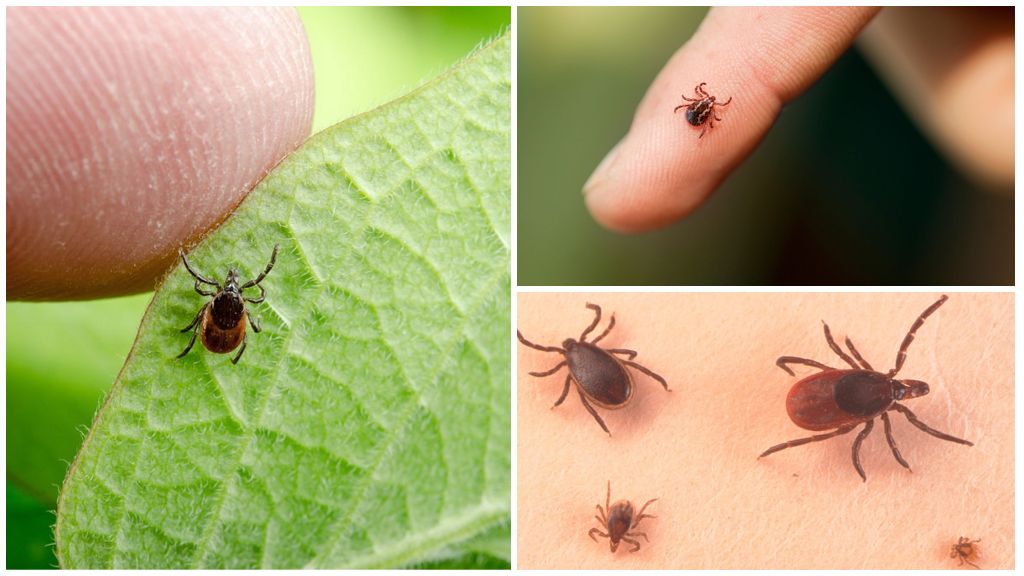
In most species of ticks, the pelvic part is motionless and fused with the body. Pelvic motility was preserved only by primitive species.Given the microscopic size of the objects of study, it is possible to consider the segments on the legs only under a microscope under strong magnification. A close-up illustration of the arachnid's legs shows that the segments are very similar and it is very difficult to distinguish them from each other.
On the throughout life the extremities of the tick can be modified. The main anatomical change occurs with the hind limbs. In predatory species, they are curved and look like ticks, with the help of which the arthropod is kept on the prey. The host has a “calm” parasitic lifestyle of scabies itching, legs are thickened, shortened and have powerful suction cups. Tetranic ticks on their paws have glands that secrete a sticky fluid that helps them move on smooth surfaces.
Internal systems
In the diagram, an opened female ixodid tick, drunk with blood, indicating the purpose of the depicted internal organs.
Internal life support systems include digestive and respiratory. The circulatory system of ticks is not developed. The analogue of the heart muscle is located on the back and has an oval shape. The aorta leaves him. The vascular system is not developed, and the blood - the white fluid in the tick, pours into the body cavity.
The digestive system is represented by:
- mouth opening;
- two salivary glands;
- pharynx;
- esophagus;
- intestines;
- anus.
The tick excretion organs include not only the latter, but also a few more. The intestine has a more complex structure:
- middle intestine with several lateral blind branches;
- small intestine;
- hind gut.
A rectal bladder, which is one of the organs of excretion, adjoins the hind gut.
Excretory organs, in addition to the rectal bladder, include the salivary glands located in the mouth. The salivary glands are needed by parasites to store the anesthetic secretion, which is used to inject with a proboscis during skin puncture.
Important!
Thanks to the secretion of the salivary glands, the bite of an arthropod is invisible to the victim.
The rectal bladder is a repository for waste products, since digestion products and dead cells of the middle intestine enter it. Pathogens located in the intestine also fall here. For this reason, feces from ticks can also be hazardous to health.
Respiratory system
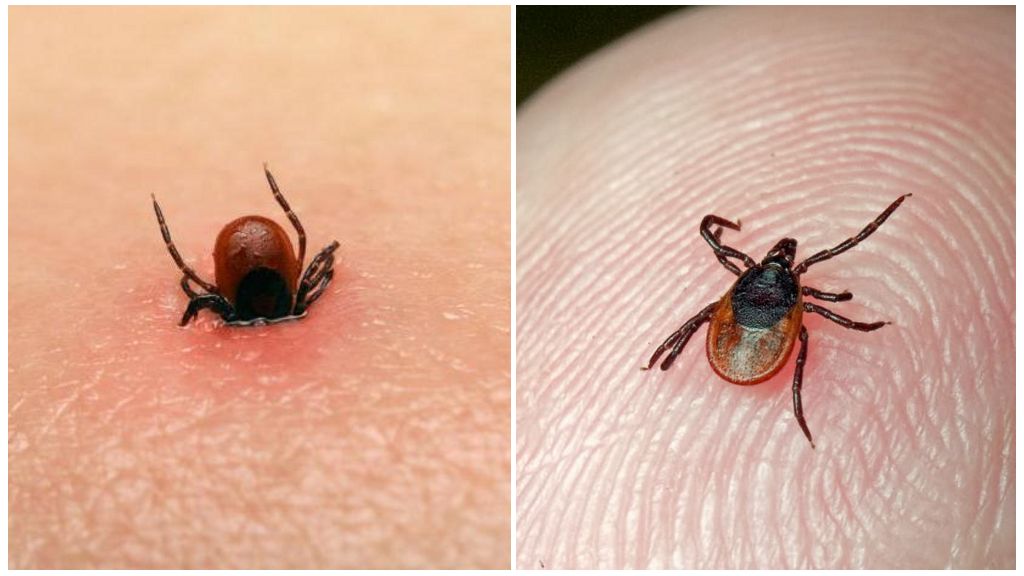
When a tick digs into the skin, it breathes not through the anus, but through the respiratory openings - the stigma of the hind legs. When inhaled, air enters the trachea - thin tubes running along the entire body of the arthropod. Tick stigmas are protected by special organs - peritrems. In ixodic peritrem, there are plates that are adjacent to the stigma from the sides and behind. Other groups have tubes of varying degrees of length and shape.
The respiratory system in this subclass of arthropods is very poorly studied. The question of how the tick breathes actually remains open. If we talk about the respiratory system, then this is the trachea. If we consider the composition of the gases, then the needs of arthropods have not yet been studied. There is a group barn ticksable to live at a concentration of CO₂ 30%.
A little-known tick threat
Information that ticks - peddlers of dangerous infectious diseasesknown to all today. But of medical importance is the fact that this group of arthropods can be a carrier of other parasites.
The question of which parasite the intermediate host is a tick is of little concern to the average layman. And rightly so, as the parasites are quite exotic. These are worms.
There are two types of worms that can cause inermicapsyferosis and bertiellosis in humans. The final owners of the worms are rodents and rabbits in the first case and monkeys in the second. A person becomes infected with these worms when accidentally swallowing a tick. In medicine, disease prevention has not been studied.
Interesting facts about ticks
There are species of ticks that can breed already from the nymph stage, and some in the larval stage.Often, these species lack the final phase of tick metamorphosis — an adult.
Exist water species of ticks. The thick stubble on their legs serves as an oar.
Ticks of the Nanorchestidae family can jump.
Tick Myths
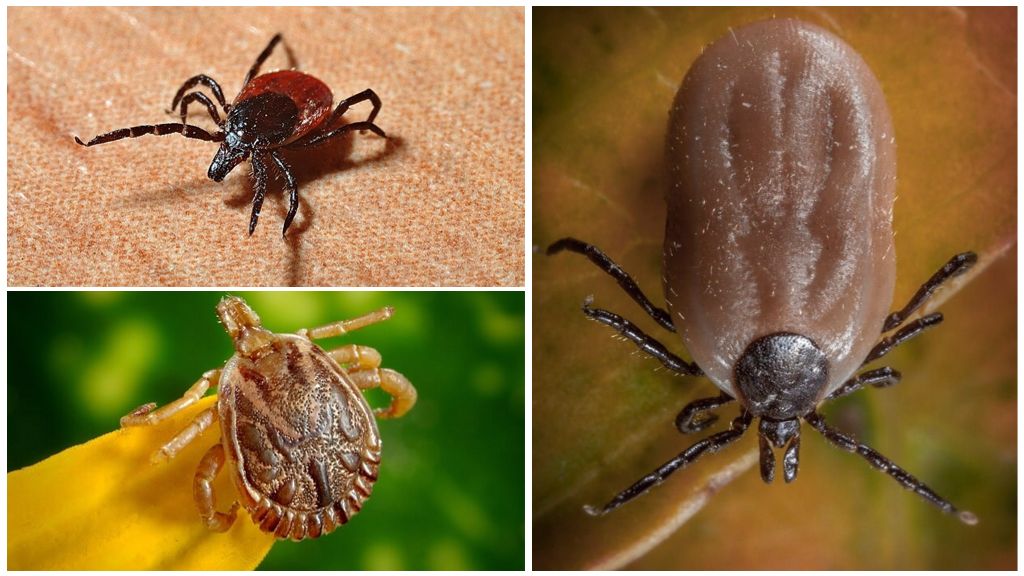
There are many fictions about ticks. Some of them are relatively harmless, others are potentially life threatening. Many myths would not hurt to debunk even in life history lessons for schoolchildren.
- In the heat, ticks doze. Misconception. In the heat, activity decreases, but only in cold regions. In hot ixodid ticks perfectly adapted to high temperatures and it is unclear even whether they sleep at night. Even in winter, ticks are unlikely to sleep in the usual sense of the word. They fall into a stupor, from which they leave immediately, as soon as the air temperature rises.
- Ticks hunt by jumping from the trees. Not. Usually ticks await the victim on plants no higher than 1.5 m: grass and bushes. Above 1 m, they rarely rise, and above 1.5 m never. Only a Persian tick belonging to Argas can fall from the ceiling.
- Ticks live only in the woods. In fact, they live even where all the forests were brought down in 2000 BC. And these are "traditionally forested" canine dogs. Many representatives of the ixodidae feel great in the steppes and meadows.
- If a tick is thrown into the water, it dies. To check whether ticks are drowning in water, you can experimentally. Do not drown.
- If the tick has recently stuck, there is no danger of contracting an infectious disease. There is. Pathogen encephalitis enters the bloodstream when a tick injects its poison into the wound.
- If at the place where the tick was sucked in, there is no increasing inflammation, then there is no infection borreliosis. Wrong. If in place bite there is inflammation, this is a guarantee of infection. If there is no inflammation, then you need take tests, since with borreliosis, inflammation does not always occur. It is impossible to neglect the check. Although without treatment, Lyme disease does not end in death, but it gives severe complications to all body systems.

